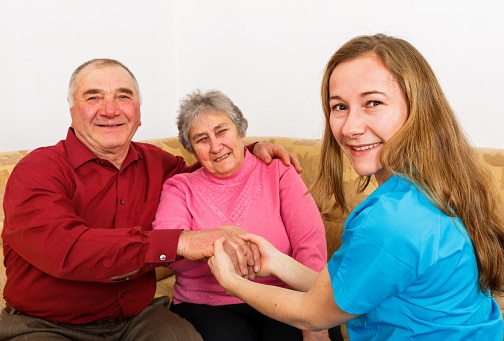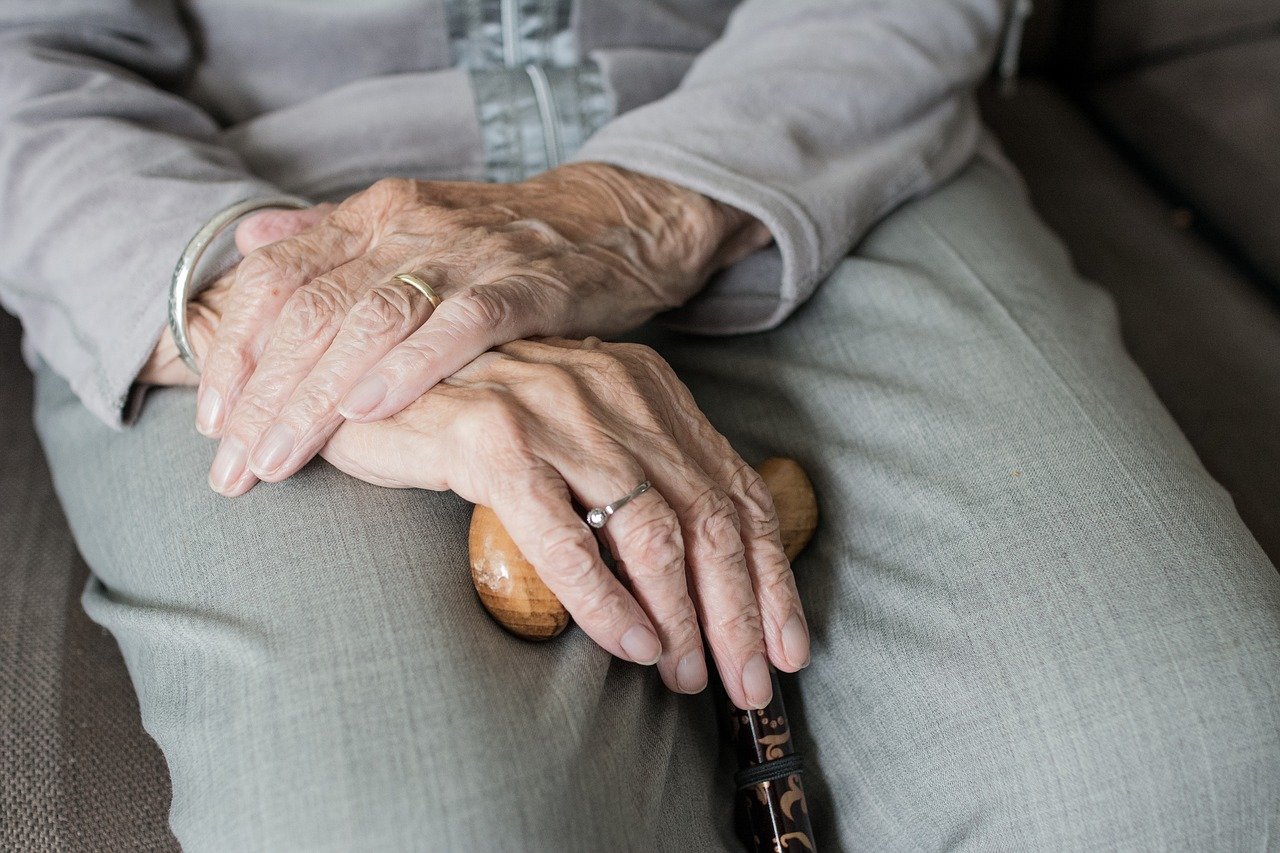
Hospice Comfort Kits
When your loved one nears the end of their life, your family will most likely get a hospice team involved in their care. This team will usually provide you with a hospice comfort kit or pack, also called the hospice emergency kit or the e-kit.
A hospice comfort kit contains medication necessary for different instances that may arise during your loved one’s final days or months. The medication will be in small doses and will allow you to promptly ease any symptoms or pain that your senior may struggle with. You will be able to keep the e-kit at home and use it when directed by a hospice nurse or staff member. Instructions concerning the use of the hospice comfort kit will be provided by a hospice nurse and may also be found in a binder or a set of documents given to you along with the pack.
This article will serve as your thorough guide to the hospice comfort kit, helping you become more familiar with its contents and use.
What is a hospice comfort pack?
As mentioned above, a hospice comfort kit is also known as the (emergency) e-kit, hospice comfort pack, or simply, a hospice kit. This pack – provided to you by a team of hospice professionals – contains a set of prescribed medications that will help you deal with pain, uncomfortable symptoms or emergencies that can come up as your senior nears the end of their life. This kit is kept in a patient’s home and allows the hospice team – upon arriving – to act quickly and efficiently.
When you reach out to a hospice team and begin hospice care, you can order the hospice comfort kit to your home. If a nurse or other members of your medical team feel that there is a need for the kit, it can be delivered even earlier. The hospice comfort kit often is and should be designed to fit the specific needs of your senior loved one’s diagnoses. So, the contents of each pack will vary. However, there are some aspects of it that are common for most patients: such as medications for anxiety, insomnia, breathing issues, and general pain.
What medications are included in a hospice comfort kit?
Several types of medications can commonly be found in a hospice comfort pack. Here are some examples to help you get more familiar:
The kit usually includes morphine liquid that can be used to treat pain and breathing issues. It will also contain:
- Medication for anxiety, nausea or insomnia such as Ativan
- Atropine drops or other anticholinergic treatments used for additional breathing problems like wet respirations
- Drugs for agitation and terminal restlessness
- Pills that help deal with nausea and vomiting
- Rectal suppositories or plant-based laxatives that treat constipation.
Depending on which hospice you are working with or what your elderly loved one’s diagnosis is, other medications can be included in the pack. For example, those at a risk for seizures or those with a brain tumor may have doses of valium in their kit to deal with those particular issues.
Why should the hospice comfort kit be kept at home?
There are a couple of reasons to have an emergency kit at your home. It is designed to address 4 main symptoms that the elderly can experience as they near the end of their life: pain, anxiety, nausea, and increased respiratory secretions.
The main goal of the hospice comfort kit is to reduce the patient’s pain, which is managed with the medication included in the kit.
The second goal is to treat anxiety, something that elderly patients experience more as they grow weaker and enter the final stages of their illness. Medication that helps control anxiety and agitation keeps terminally ill seniors comfortable and lightens the burden on their caregivers.
Third, particularly in patients who are battling cancer, nausea is very common. At the end of life, hospice comfort kits can assist in controlling this symptom, along with vomiting.
Lastly, as the senior’s body begins to slow down, respiratory secretions begin to build up and lead to gurgling or other respiratory issues. Though this is not painful, it can make caregivers and seniors very uncomfortable. The e-kit can assist with this since it also includes medication that reduces respiratory secretions.
Who will explain how to use the hospice comfort kit?
Before you get to take the hospice comfort kit home, your hospice care team should be able to explain to you what each component of the kit is used for and when and how it should be administered. Some hospice teams suggest that you do not administer the medication at all and instead, wait for the symptoms to occur, decide if there is a need for the pack when you call them, and only then will they direct you on how to administer the medication.
As you can imagine, this method can burden the caregiver and the patient with a lot of anxiety and stress. It can be extremely frightening to watch your loved one experience pain. Having to learn something new as you deal with this is impossible for some individuals. So, we suggest that you request detailed instructions from your hospice care team when it comes to the hospice comfort pack. Your care manager nurse should be able to explain each medication to you, along with what symptoms may occur at the end of life.
How should the medication in a hospice comfort pack be administered?
Once you are given the hospice comfort kit or after it is delivered to your home, you should store it in the refrigerator and only use it if a hospice nurse directs you to do so. In most cases, the hospice nurse will recommend that you use the kit if your elderly loved one experiences new symptoms or if their current situation worsens and the nurse believes that urgent action is required.
Of course, if you are the primary caregiver who sees the patient on a daily basis, you will also be the one monitoring their symptoms. If you notice that there is a change in the patient’s physical or mental state, be sure to contact your hospice support team immediately. The hospice nurse will decide whether or not medication needs to be administered and how it should be used, what the correct dosage is, etc. The hospice nurse will be able to walk you through the procedure if you are the one who has to administer the medication due to an urgent issue.
When should the hospice comfort pack be used?
As mentioned before, the hospice comfort kit should only be used if the caregiver notice new symptoms or worsening of current symptoms in their elderly loved ones. In these cases, the senior will require immediate attention. You should only use the pack after contacting your hospice nurse and getting the directions from them.
Who should administer the drugs in the comfort kit?
If you are a primary caregiver to the elderly loved one and symptoms arise requiring immediate action before a hospice team member can arrive at your home, you will be the one who administers the drugs in the hospice comfort kit. After getting in touch with a palliative care nurse, they will recommend how to open the kit and give you verbal orders – along with the palliative care physician – for how and when the medication needs to be administered. If you called the hospice team before the situation turned into an emergency, they will be able to use the kit themselves.
Conclusion
In short, a hospice comfort kit can alleviate the amount of stress caregivers and patients often feel as the senior nears the end of life. The pack can also be of great comfort during emergencies, eliminating the need for trips to the pharmacy or medication deliveries. By allowing you instant access to necessary medication, the hospice comfort kit lets you and your hospice care team attend to the patient as quickly as possible. This way, you are prepared well in advance and can ensure that your elderly loved one gets the highest quality of care during the final moments of their life. It’s important to remember that not all hospices supply the hospice comfort kit; so, be sure to contact your hospice physician and ask about it. In addition, ensure that your kit is checked and updated every 12 months or earlier, depending on the expiration date on the outside of the kit.
Sources:
- “Comfort care kit: use of nonoral and nonparenteral rescue medications at home for terminally ill patients with swallowing difficulty”, Richard Yap, pubmed.ncbi.nlm.nih.gov
- The Hospice Comfort Pack, Visiting Nurse Service of New York, www.vnsny.org
- Impact of a Hospice Emergency Kit for Veterans and Their Caregivers: A Prospective Cohort Study, F. Amos Bailey, https://www.ncbi.nlm.nih.gov
Related Articles

Elder Law Attorneys: A Comprehensive Guide
If you are someone who is taking care of a senior or has an elderly loved one, you should consider working with an elder law attorney. Though you may not expect it, individuals begin to face new and more complex legal concerns as they get older. Actions that may have seemed trivial when they were […]

When Is It Time for Assisted Living?
Wondering if it is time for assisted living for your loved one is a common question for caregivers. As a caregiver, you might have been considering the question for months or possibly even years. Your loved one might have declined to continue the discussion as the thought of moving out of their family home and […]

All About Adult Day Care: Community and Costs
Adult day care is a fairly new concept for caregivers. The basic idea is to provide a secure place where seniors can enjoy social activities during the day and be provided nursing care as needed. It’s a hybrid model of eldercare that prioritizes community. At the same time, seniors get help with common custodial tasks […]

Respite Care: An Overview
Caregiving can be overwhelming at times. That’s why taking a break is essential for recharging your battery. Respite care, also called short break care, is a way for caregivers to get temporary care for their loved ones so they can take some time to rest. Getting this “me time” of respite care can renew the […]

An Overview of Senior Rehabilitation Centers
Recovering from injury or illness in your golden years may take time and support. That’s where senior rehabilitation centers become essential. If you need a temporary stay to recover from injury or illness, senior rehabilitation centers can be the solution to get expert care and daily support. In this article, we’ll give you an overview […]

A Caregiver’s Guide to ADLs and IADLs
This article has been medically reviewed by Dr. Martin Duggan in 2021. This content is not intended to be a substitute for professional medical advice, diagnosis, or treatment. Always seek the advice of your physician or another qualified health provider with any questions you may have regarding a medical condition. As a family caregiver, your […]